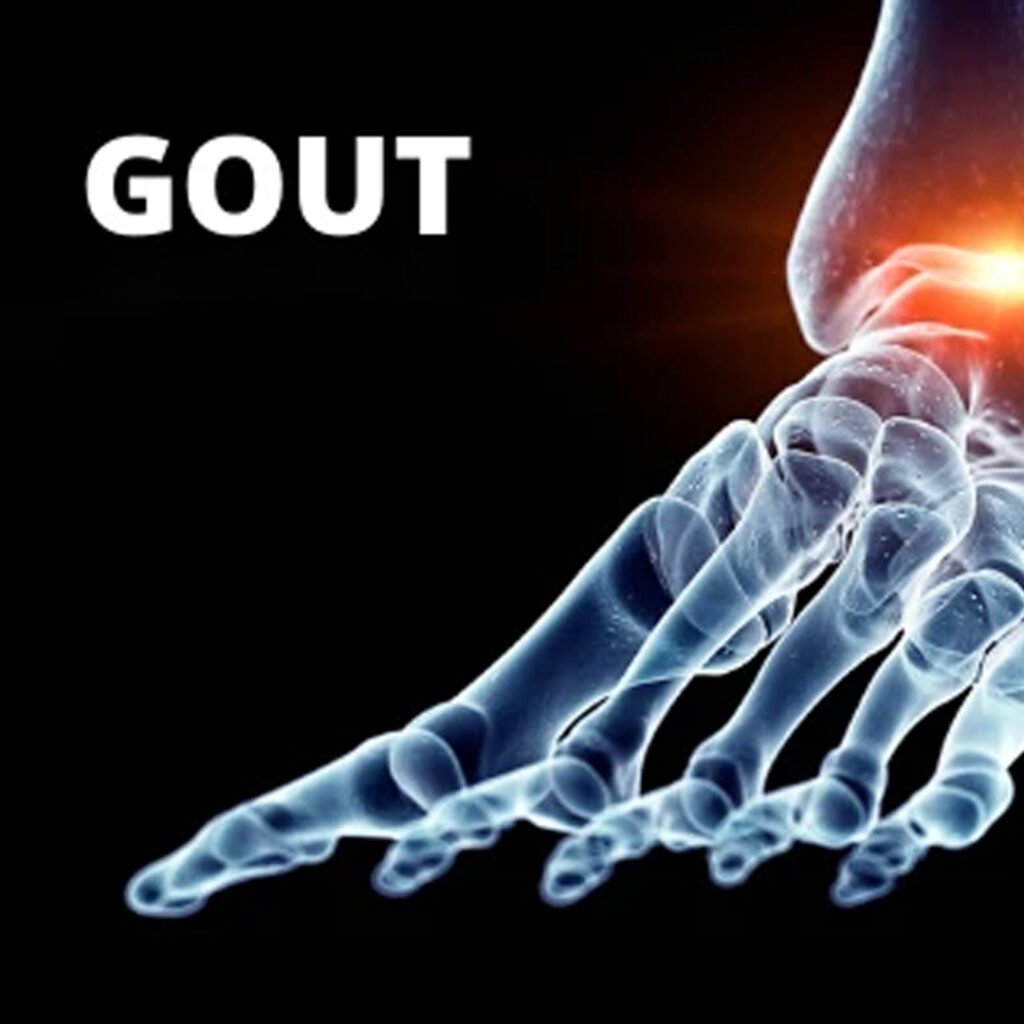Gout
Introduction
Gout is a common type of arthritis caused by excess uric acid in the blood, forcing a sharp crystal in the joints. It often results in sudden, severe pain, swelling, redness and tenderness, especially in large toe. Gout attacks can be extremely painful and can leave it when untreated. With timely diagnosis and proper treatment, the situation can be effectively managed to prevent joint damage and long -term complications.

Types of Gout
Acute gout
A sudden and intense attack of pain and swelling, usually affects a joint (usually large toe). Symptoms often appear overnight.
Chronic gout
The acute gout develops after repeated attacks. It leads to constant joint inflammation, hardness and visible uric acid deposits (Tophi).
Pseudogout
Due to calcium pyrofosphate crystal deposits instead of uric acid. Symptoms are similar to gout but separate management is required.
Tactile hyperthymia
A condition where uric acid levels are high, but without noticeable symptoms. It can progress for gout if not monitored or managed.
Causes of Gout
- Increased uric acid levels in the blood (hyperuricemia)
- Excessive consumption of red meat, seafood, and high-purine foods
- Regular intake of alcohol, especially beer and spirits
- Obesity and being overweight
- Family history of gout or genetic predisposition
- Certain medications like diuretics and aspirin
- Kidney problems that reduce uric acid excretion
- Dehydration and low water intake
- High blood pressure and metabolic syndrome
- Recent surgery or physical trauma
- Chronic health conditions such as diabetes or heart disease
Clinical features of Gout:
Acute joint
Sudden onset of severe pain, often at night, usually affecting the big toe joint.
Swelling and Redness
The combined crystal-inspired inflammation causes visually inflammation, red, warm and tender.
Tenderness
Even slight touch or pressure on affected joints causes unbearable pain and discomfort.
Recurrent attack
Painful episodes can recur in weeks or months, gradually involving several different joints.
Toffee construction
Chronic cases show uric acid crystal deposits making lumps around joints, ears or fingers.
Symptoms associated with Gout
- Sudden and intense joint pain, often starts at night and deteriorates quickly.
- Constant inflammation in the affected joints, movement becomes painful and uncomfortable.
- Redness and heat around the joint due to ongoing inflammation.
- Extreme tenderness where mild touch or pressure also causes severe pain.
- Limited range of speed in the affected joint during an attack.
- Painful episodes that include one or several joints over time.
- In chronic cases the formation of uric acid crystal lump (Tophi) under the skin.
- Fever and general discomfort can occur with severe or prolonged gout attacks.
Investigations in Gout
- The doctor evaluates joint pain, frequency of attacks, swelling, diet, alcohol intake and family history patterns, whether symptoms match gout or match any other joint position.
A blood test measures the level of uric acid. The elevated level suggests gout, although some people with high uric acid never develop symptoms, so the result is always considered with clinical features.
Fluid is taken from the swelling joint using a needle. Under a microscope, uric acid crystals are identified, gout is confirmed and separated from infection or other types of arthritis.
The test helps detect an increase in white blood cell count or inflammatory markers, which may appear during a gout flair, and also control infections of joints introduced with similar pain and inflammation.
ESR measures how quickly red blood cells settle under a test tube. A sharp rate indicates inflammation, helping to separate gout flares from non-inflammatory joint pain.
CRP is a protein produced in response to inflammation. The levels increase during gout attacks, but since they also increase in other inflammatory conditions, the results are combined with clinical and other laboratory findings.
Since the kidney filters uric acid from the blood, testing such as serum creatinine and blood urea nitrogen (Bun) are performed. Poor kidney function can explain high uric acid and recurrent gout attacks.
X-rays may not show early gout, but in advanced cases can reveal chronic joint damage, bone erosion, or uric acid crystal deposits (TOPHI), providing a clear picture of the disease
Ultrasound may detect uric acid crystals, joint inflammation and initial structural changes. It is a non-invasive imaging test, which is more sensitive than X-rays for early gout diagnosis.
This advanced imaging test distinguishes uric acid crystals from other ingredients in joints with high accuracy. This is particularly useful when the diagnosis is not clear or when other tests give indoratorous results.
